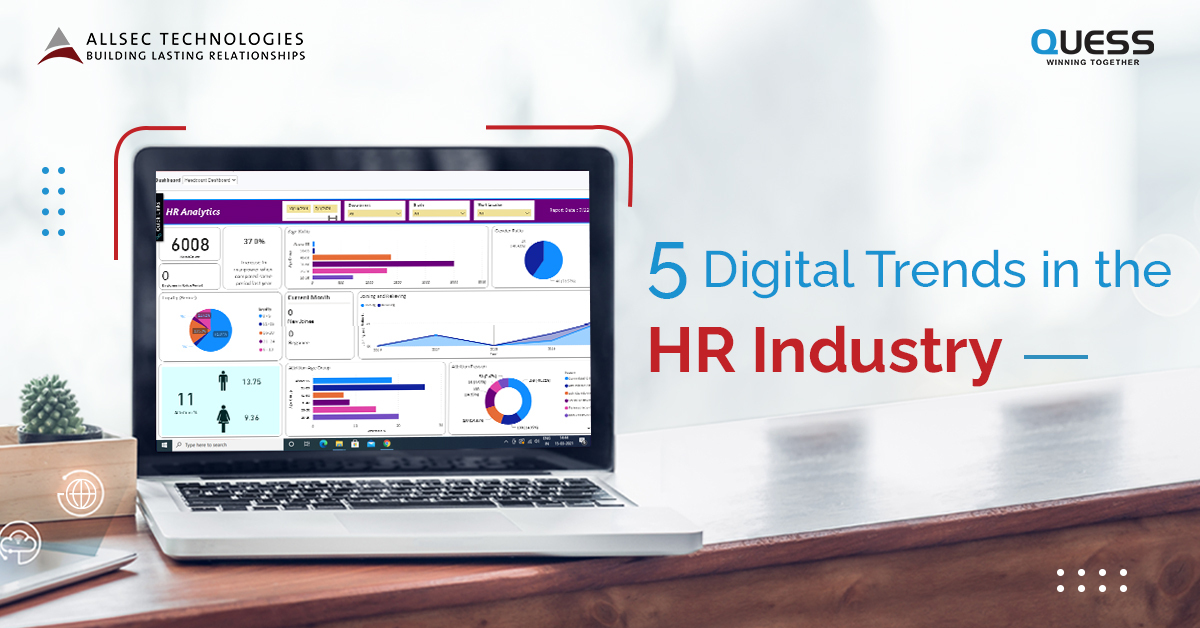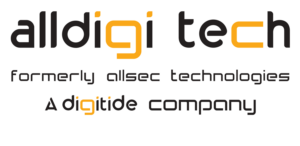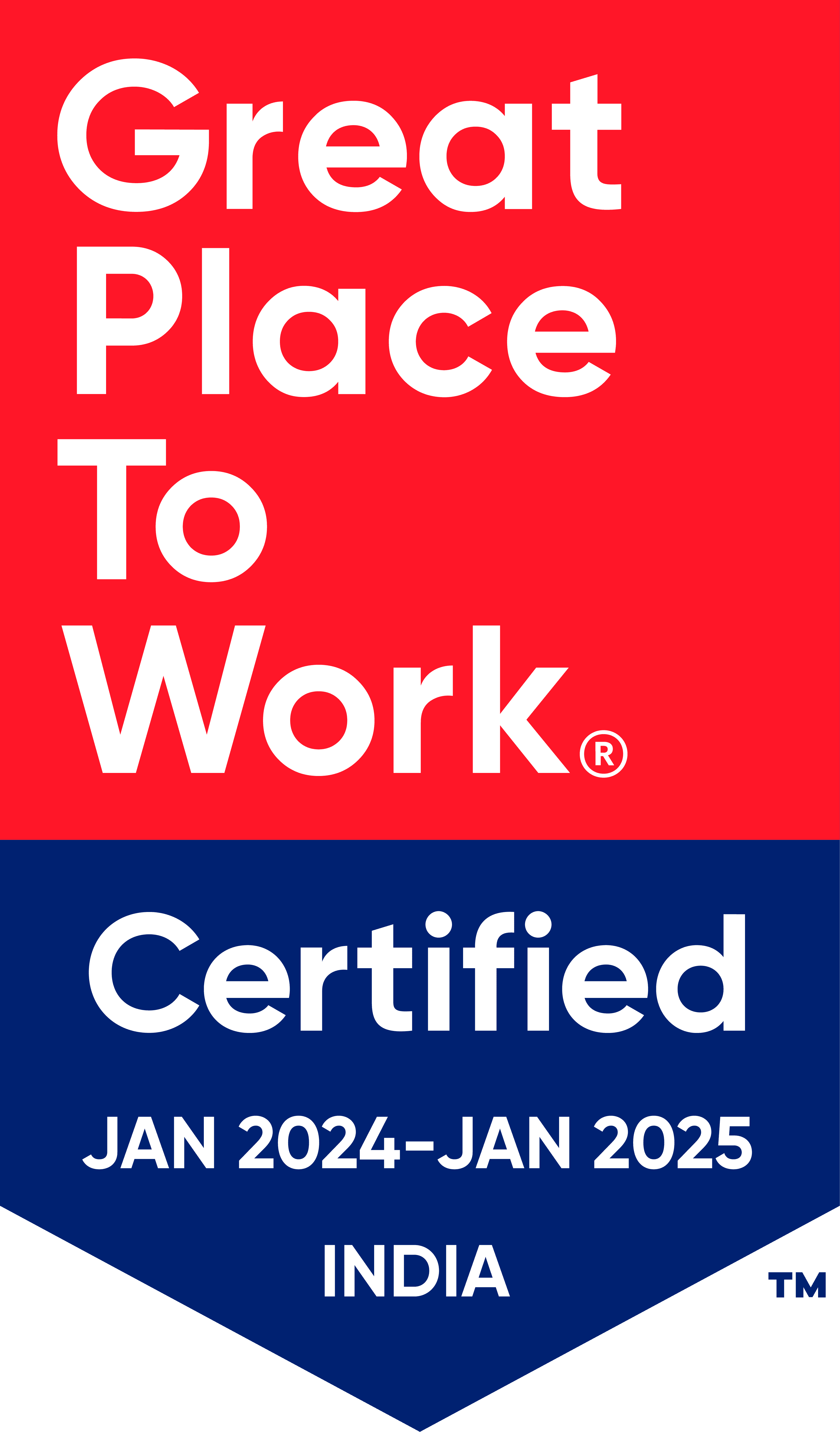
5 Digital Trends in the HR Industry
Before the pandemic, digital tools only played a supporting role in the HR ecosystem. And although artificial intelligence, saas Payroll, and a growing gig economy advocated innovation, a majority of CHROs preferred legacy operating models. The pandemic put a full-stop to this trend.
In 2021, digital HR is set to take centre stage. 92% of company leaders have already shifted their focus to digital, as their “present model is no longer viable.”
In this article, we discuss five trends that will be instrumental in driving this transformation.
TREND 1: Increased focus on employee well-being via virtual tools
At the beginning of the pandemic, business continuity was the primary agenda for business owners. Every business decision was geared towards this goal and collaboration platforms like MS Teams, Zoom, Slack, and BlueJeans became key tools in this “new normal.” For a while, it seemed to be working, studies showing productivity shooting up came flooding in.
However, in a few months, reports of burnout started mushrooming. 37% of employees said that they were working “longer hours than usual.” And as the days progressed, work from home was not as productive as it used to be. In 2021, business leaders are likely to tackle this head-on and focus on employee well-being.
In the Global Human Capital Trends survey, 80% of respondents felt employee well-being needed to take centre stage for an organization’s success. Reports also suggest that detachment from human-interaction has led to increased employee dissatisfaction.
The onus is on the CHROs and HR leaders of an organization to reignite the workforce rigour. And since hybrid models are likely to continue, virtual tools will be the best way to do it. The challenge will be to mirror human interaction and address the feeling of ‘out of sight, out of mind.’ Creating an inclusive ecosystem and employing end to end hr solutions will be a great place to start.
TREND 2: App-based HR ecosystems will become a necessity
Before the pandemic, the typical corporate employee received an average of 121 emails and sent about 40 per day. This number went up by 5% when work-from-home became the norm.
This is a serious issue. When a task is disturbed by an email, it takes at least 20 minutes to return to the task before the interruption. Constant interruptions can also temporarily lower IQ by 10 points which reduces productivity and quality of work. This is but one example of how legacy models adversely disrupt workflow and productivity.
An app-based ecosystem that centralizes communication will eliminate unnecessary distractions. It can also provide holistic coverage of all touchpoints in an employee’s lifecycle. That is why 88% of Chief HR Officers are planning to invest in three or more HR technologies by 2022. The emphasis will be on creating a system that mimics office efficiency and deletes redundant workflows.
TREND 3: Workforce analytics will lead to cost-optimization
Reducing operational costs will continue to be a priority for organizations. Zero-Based Budgeting (ZBB) is slated to be a popular way to optimize costs. It takes a result centric approach to costs, data collection, and finalization of business objectives.
A ZBB approach will determine budget allocation on business objectives, rather than the previous budget (as done on traditional incremental approaches). Each HR activity will be aligned with the business goals, and prioritized accordingly. This bottom-up approach can help companies and HRs optimize their costs without compromising on operational efficiency.
Real-time workforce analytics will play a crucial role in ensuring the success of ZBB. It will simplify forecasting, job allocation, and setting business parameters. With the right data, HRs will also be able to set optimum minimal operating standards across all organizational hierarchies.
TREND 4: Critical skills will trump critical roles
The average cost for reskilling an employee is approximately $24,000 per person. But for critical roles, HR managers prefer reskilling over hiring anew. This practice was shown to be six times more cost-effective by HR maven Josh Bersin in his commissioned study for General Assembly and Whiteboard Advisors.
In 2021, this practice may not be enough to keep up with the volatility of the market. HRs are likely to shift their focus to reskilling employees for organization-wide activities. Key focus areas are likely to include increasing digital literacy, promoting cognitive thinking, and developing social management skills. Understanding how to use emerging technologies and cloud based hrms will be the most critical skill in this arrangement.
Flexibility between departments and collaborative projects will give employees an opportunity to thrive in roles that are made for their skills.
TREND 5: Business resilience may take precedence over business efficiency
Before the pandemic, most companies were focused on maximizing productivity – an ineffective strategy for trying times.
Alternatively, companies that invested in resilient digital technologies like apps and platforms, rather than expanding on legacy models. fared better during the pandemic. For example, RXR Realty had set up a digital lab before the lockdown. The goal was to design an app—RxWell—that makes moving, deliveries, and rent-payments easy for tenants. It would also give real-time analytics on heating and home optimization. This investment allowed RXR to adapt quickly to the pandemic and stay in business, despite an 8.57% dip in home sales.
In 2021 and beyond, organizations are likely to follow RXR’s example and focus on resilience more than efficiency. The process will involve diversifying workflows and building a flexible and responsive organization that is cross-functional in knowledge and training.
The Trends Say, ‘Digital Must Happen Now’
Workplace transformation was gaining steam, but the pandemic forced it into a gallop. The need of the hour is to adopt digital transformations and upgrade from legacy HR models or wither away.
Speaking of changing business models, Gregg Lemos-Stein once said, “It’s like trying to change your tires while the car is going 100 miles an hour.” And true enough, the shift can be hard.
With digital HR tools, saas Payroll options, and platforms, this transition can be seamless. A centralized app-ecosystem that consolidates HR functions will have the power to facilitate the transition without interrupting business. To understand how to create a robust digital HR ecosystem swiftly, reach out to us.


